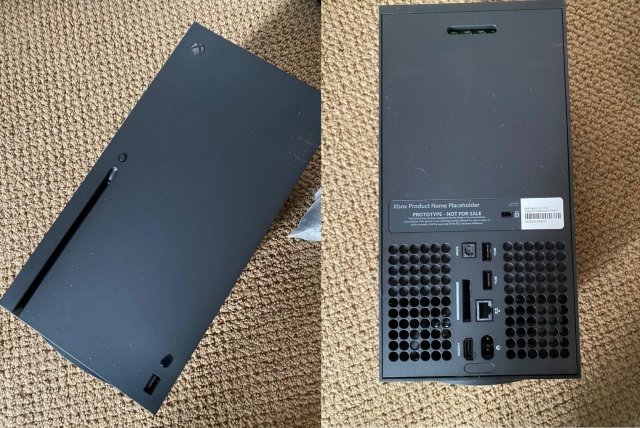
Can you hear it? Can you feel it? Can you see it? Well, probably not. But you can hear the YouTube videos revving up. The Digital Foundry videos commenting on the leaks, rumours, and whispers circling the world wide web. The tension between the /r/XboxSeriesX and /r/PS5 subreddits on Reddit.
That’s right, we’re in new console season! Much like Francis, who recently wrote about his apprehension for the next round of consoles, it only feels like yesterday (or, rather, a just a few months ago perhaps…) since I was eagerly ripping the Amazon cardboard apart to get at my new console.
But it’s now time to look forward into the bright and wonderful future ahead of us! It is rumoured that it’s only going to be mere weeks until we have a full PlayStation 5 reveal, in which we will hopefully see a much bigger picture of what we’ll be expecting come release date. We do already know that it’s going to include an APU from AMD, including their latest Zen 2 CPU architecture and Navi based GPU, with hardware ray tracing support.

Ryzen has proven to be a massive leap in performance for AMD
For myself, it’s this last point that I’m most interested to hear about, because as of this moment, AMD has no hardware ray tracing support on any of its desktop GPUs. Nvidia has led the way in this department with their RTX branded GPUs, although performance is not great, to be kind.
The CPU, however, we already know is streets ahead of the aging Jaguar based CPU in the PlayStation 4. Leaks have suggested Sony are going for something equivalent to the Ryzen 5 3700X, with 8 cores and 16 threads, although it’ll be run at a lower clock speed than its desktop equivalent to control power usage and, consequently, heat output. For the GPU we can look towards the 5700 XT for around a similar performance benchmark.
The specs that we are to find in the Xbox Series X will likely be very similar. Rumours have suggested that Microsoft has gone for a more powerful GPU from AMD, that would put it around the equivalent mark of the Nvidia RTX 2080. However, by doing this they will almost certainly need to command a higher price point than the PS5, and it also means AMD is sitting on a GPU that would out-perform all their other desktop offerings.

The leaked Xbox Series X prototypes, showcasing the front and back of the new console
The strong rumour for some time, though, has been that the Series X will sit at the top of the pile, with another console, codenamed Lockhart, sat below it. It is currently speculated that this console will be a similar proposition to the Xbox One S All Digital Edition, with slightly less RAM, a weaker GPU and digital-only. This last fact would have been an issue some five years ago, especially in Europe where digital games are much more expensive than their physical counterparts, but the introduction and success of Xbox Game Pass makes it a much more palatable option.
Whether or not this lower-powered console makes it to market is another question, but it seems to leave Microsoft in somewhat of an odd position. They have already confirmed that content released in up to the next two years, and potentially beyond, will play on the “Xbox family” of devices, which includes PC. If we assume these rumours are true, Microsoft will come to market again as the most expensive, this time with no Kinect, no HDMI-in capability (the recent prototype image leaks do not show this port, not to mention Microsoft’s removal of some of the TV multimedia features), and no VR strategy.
Speaking a couple of months ago, Phil Spencer, head of the Xbox brand, spoke about gamers “not asking for VR”, despite several years ago claiming that the Xbox One X will be the only console supporting “high-fidelity VR”. Something that never materialised, and a venture Sony has taken on to much success.

The new PSVR2 could do away with the wires, going full wireless
In fact, the PS5 is set to support wireless VR, with built in speakers, upgraded higher resolution screens, and even eye tracking if patent leaks are anything to go by. It appears unlikely that a new version of the headset will be available at the console’s launch, with leaked internal emails suggesting that it’s more likely to arrive in the latter half of 2021. Microsoft has the HoloLens technology at its disposal, and in fact it could theoretically offer support for the HTC Vive and Oculus brand of headsets through the Windows 10-powered Xbox, but it seems as though this isn’t high on Microsoft’s priority list.
The trouble is, I don’t know what is high on Microsoft’s priority list other than simply games. But its track record over the last generation has definitely not been as strong as Sony’s, with Microsoft exclusive titles (and multi-platform) consistently falling way below those on the PlayStation brand. Halo 5: Guardians is noted to have sold around five million copies on VGChartz (although the real figure is likely closer to seven million), a figure that is bested by six games from the PlayStation 4. It is no wonder why Microsoft has been so keen to push the Game Pass service across its platforms.
Unless Microsoft have something secret planned for the Xbox Series X that we’ve yet to hear about, I have to wonder where the incentive is going to be for the majority of gamers from an Xbox One to upgrade, unless it’s simply for better performing games. Those on PC are probably just wasting their money purchasing the console (and therefore Microsoft is losing out on Xbox Live revenue – something I’m sure they will look to recoup in some other way), and anyone with solely a PS4 will surely have little reason to consider the Xbox Series X.

The leaked PS5 development kits from 2019
If Sony get VR and the price right, I can see the PlayStation 5 cultivating a very commanding position.


































